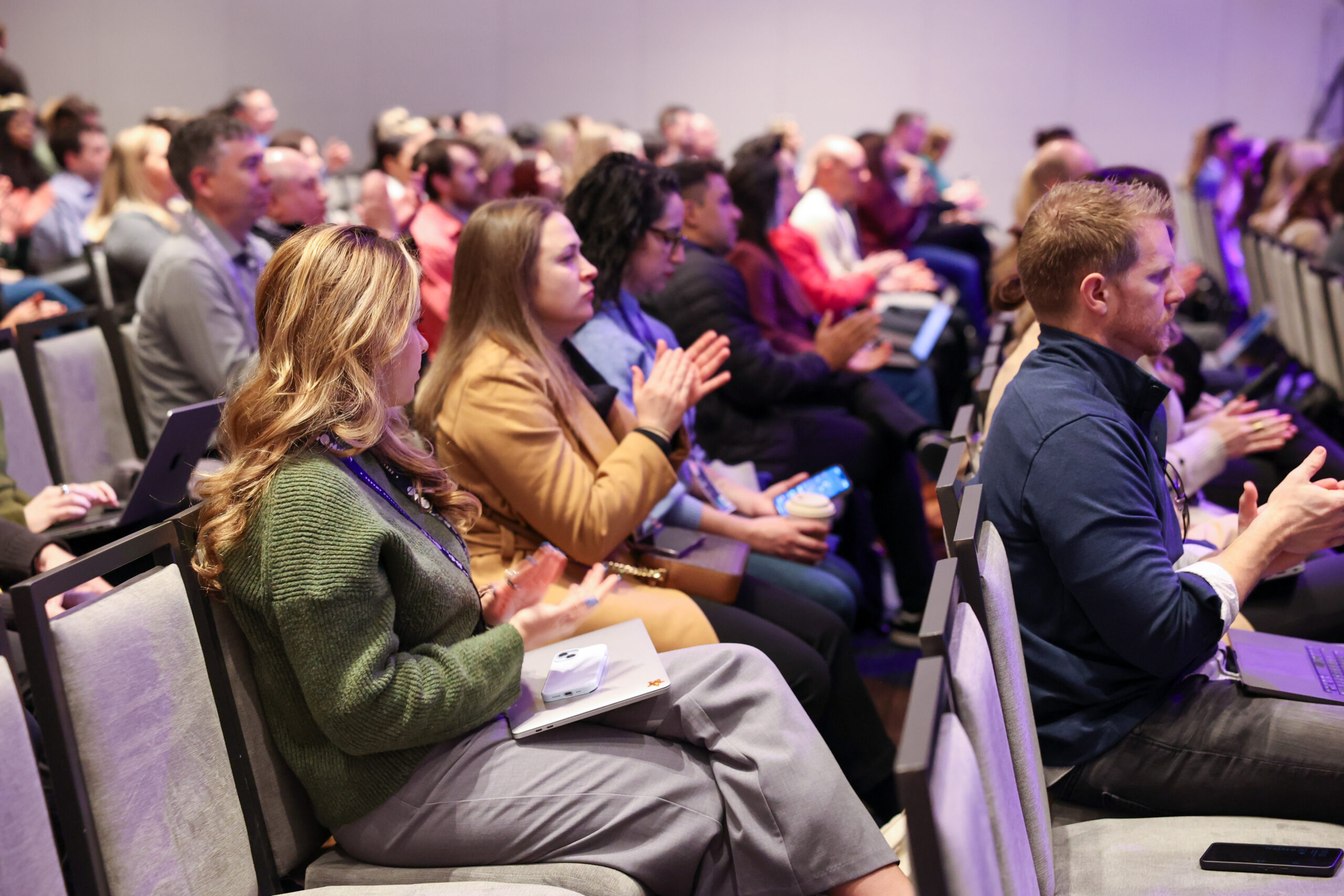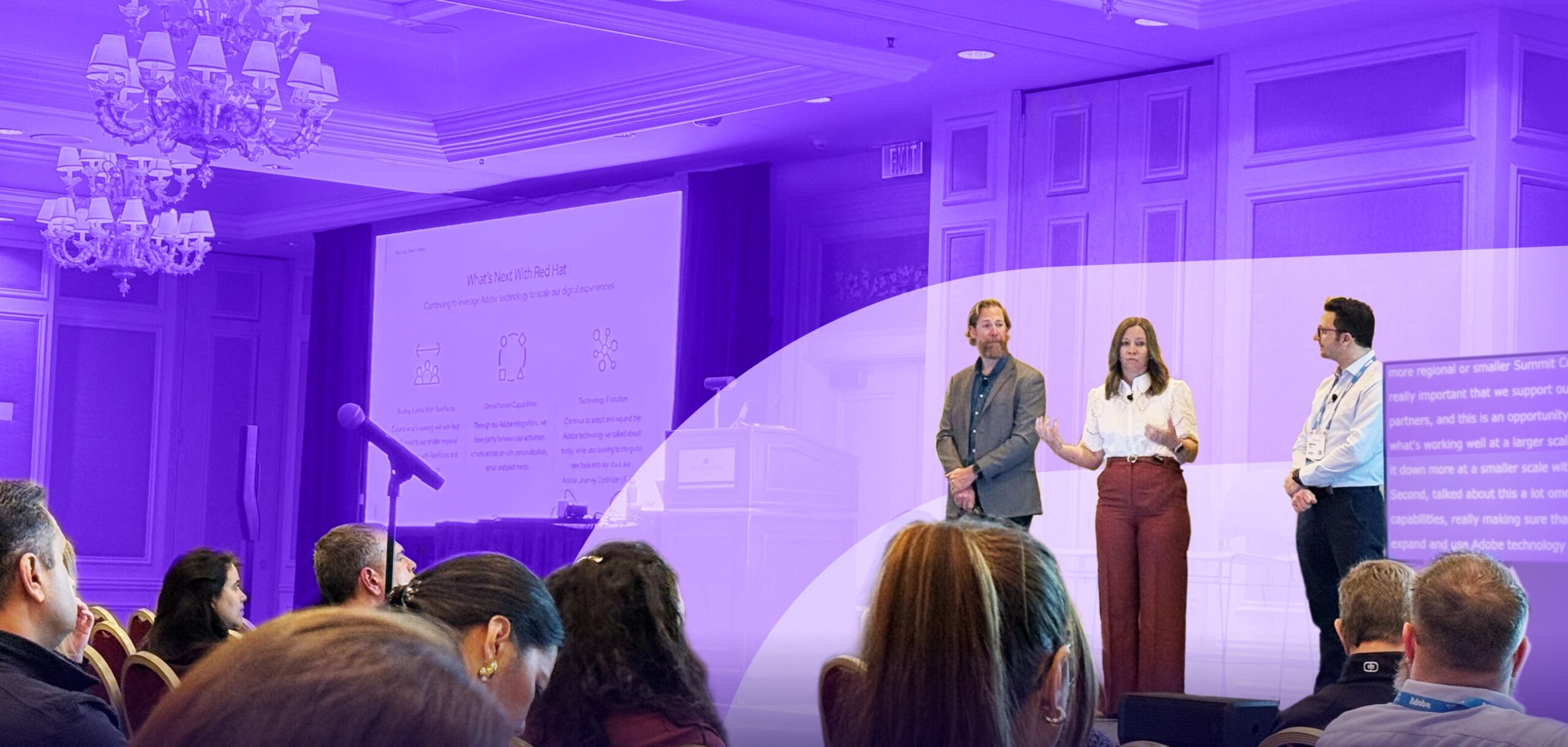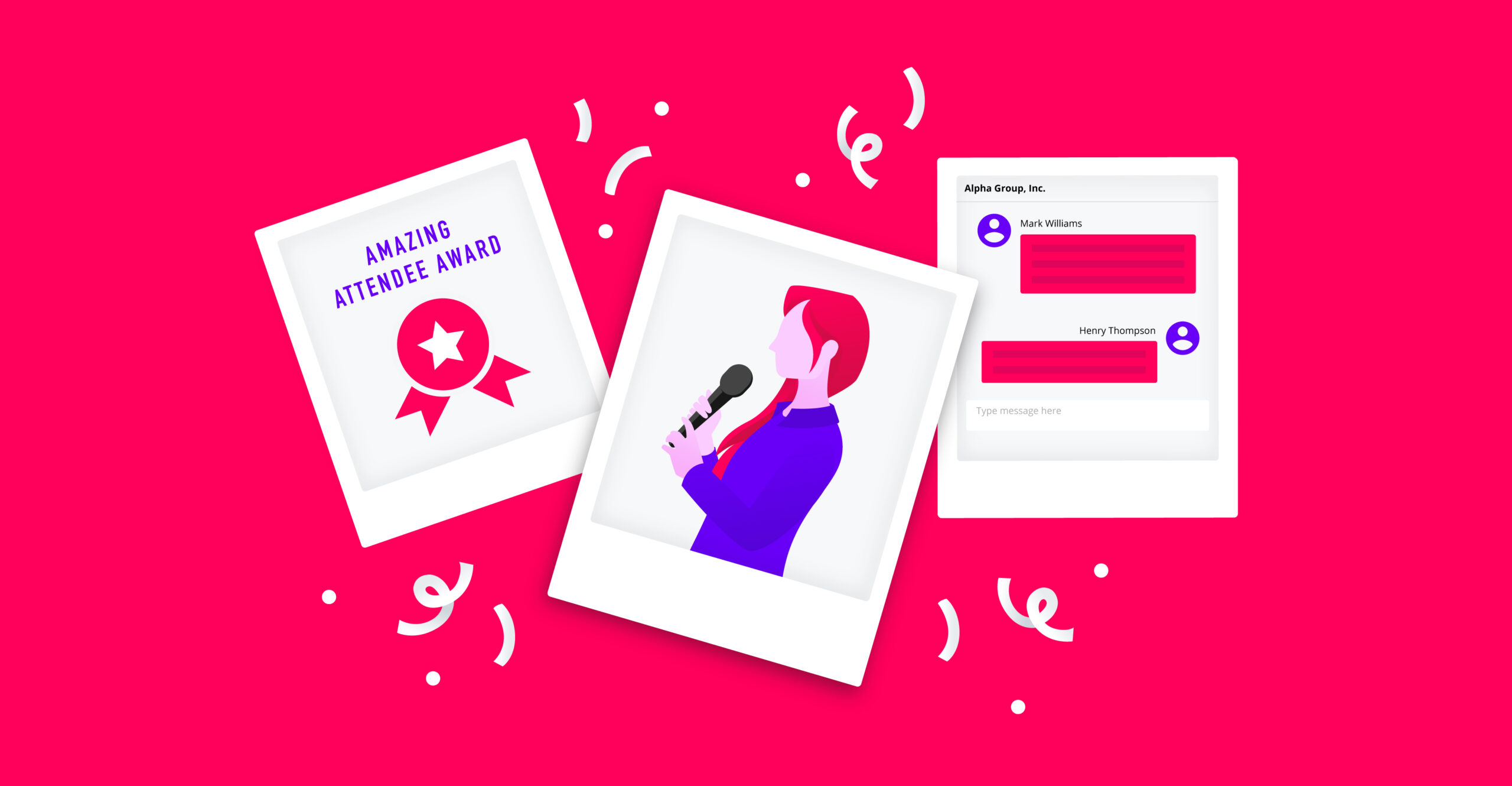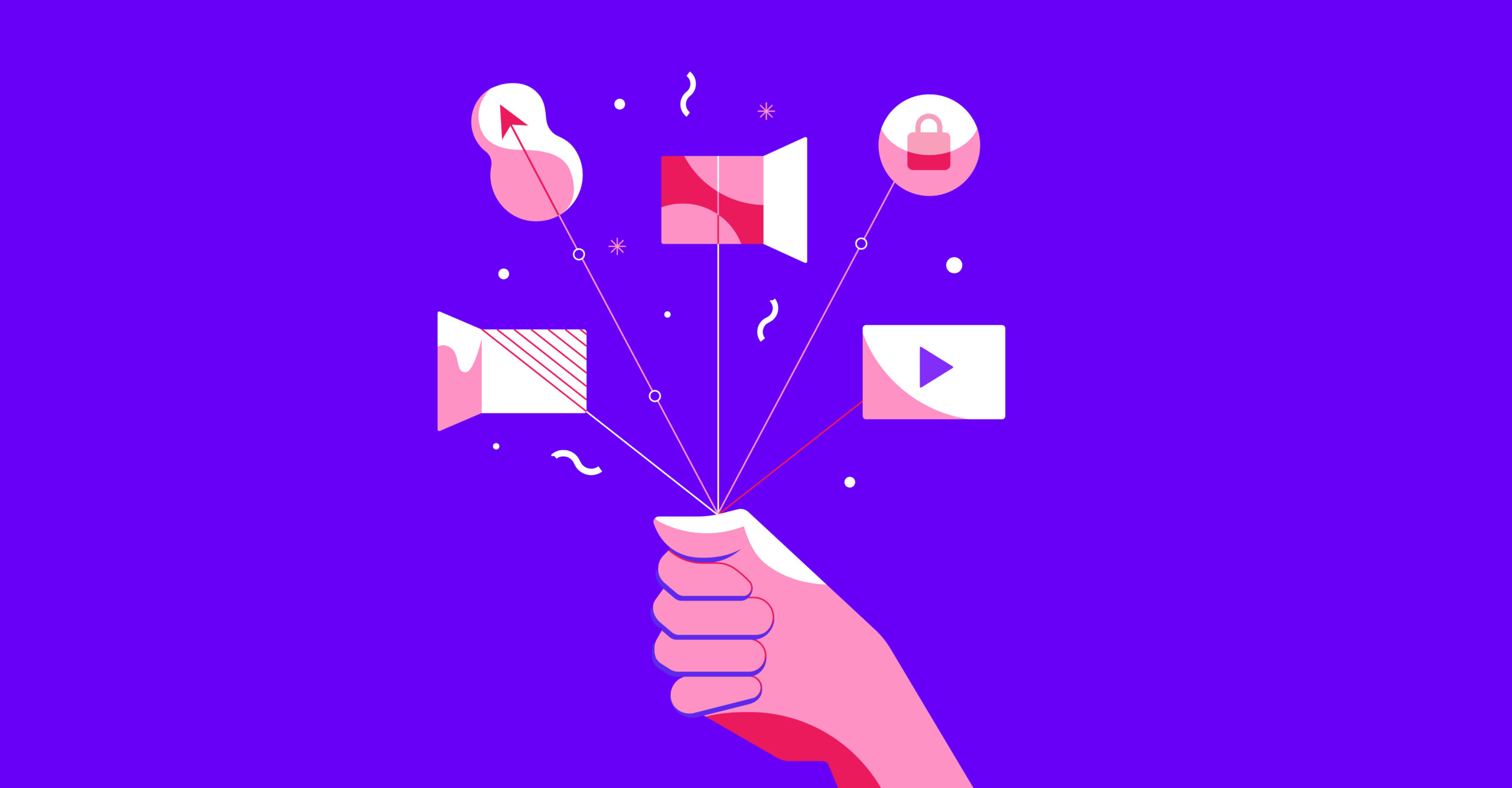How do you create a memorable event? There’s the quick, obvious answer: Just add high-profile guest speakers, splashy entertainment experiences, and other big-budget offerings designed to dazzle. But experienced events leaders know that attendee engagement requires much more than pricey gimmicks. In an era of busy schedules, tight budgets, and an abundance of content competing for everyone’s attention, there are no shortcuts.
But prioritizing a few best practices for attendee engagement from the start of the planning process — long before the registration desks open at your event — makes all the difference, as an all-star panel of industry leaders shared at RainFocus INSIGHT earlier this year.
The Experts
- Michele Cole: Director, Global Event & Experience Marketing, Esri
- Rocky Citti: Sr. Marketing Technology Manager, Workday
- Sanya Khera: Senior Product Manager, Intuit
- Ashleigh Cook: CMO, RainFocus (panel moderator)
Here are the experts’ top tips from their INSIGHT discussion:
1. Weave personalization into every facet of the event.
Even at massive conferences with hundreds of thousands of attendees, everyone wants to feel that sessions and experiences were crafted specifically with them in mind. By mapping attendee personas and leveraging them from the start, event planners can tailor experiences to meet needs and interests. VIP attendees and key clients, for example, might want opportunities for exclusive one-on-one meetings. Personalized content recommendations and agendas help all personas create their ideal schedule. During the event, segmented notifications for attendees, staff, and sponsors ensure everyone stays informed and engaged.
2. Encourage networking and interactivity.
As RainFocus executives JR Sherman and Doug Baird emphasized during their opening keynote at INSIGHT, events are all about relationships. Make the most of the unique power that comes from gathering in person by creating dynamic human-to-human experiences.
Pre-event surveys and opportunities for starting to build connections with attendees who share interests or business goals (e.g., through browsing attendee lists and chatting in the event’s mobile app) set the foundation. The panelists also recommended interactive elements, such as Braindates and live polls, to boost attendee engagement during the event.
3. Adapt based on signals and preferences.
Surveys, quick polls, and similar elements not only foster engagement by making attendees feel involved, but also provide clues on what they want to see. Ideally, teams can build in opportunities for flexibility to meet their audiences’ needs on the fly and use real-time data to adapt.
By monitoring attendee signals, such as recurrent themes within questions asked during session Q&A programs, app usage patterns, and other data, they can identify topics and approaches that are the most strongly resonating — and potential additions or modifications to offer, even within the same event.
For example, if a particular session draws unexpectedly large demand but cannot accommodate every interested attendee, repeating the session in a previously designated flex slot on the event’s last day demonstrates attentiveness to attendees’ needs and increases satisfaction.
4. Supercharge analysis through technology.
Everyone wants to attend an event to interact with people — not robots or machines. However, data and technology play a pivotal role in creating memorable event experiences.
The panelists emphasized the importance of data integration to connect data from event registration, session attendance, and countless other sources with marketing platforms and the rest of the tech stack. This connection provides a deeper understanding of attendees, powering personalization and optimizing interactions. Likewise, using generative AI to process and analyze volumes of attendee feedback makes this critical evaluation step more efficient.
5. Keep the community flourishing.
Finally, a memorable event should leave every attendee feeling valued, connected, and inspired. To maintain that positive impression long after everyone has flown home and returned to their daily office routine, continue cultivating a sense of community.
Hosting online spaces for attendees to gather, creating an on-demand library of content for replaying a selection of conference sessions, actively responding to post-event feedback, mailing out distinctive event-related items, and, of course, continuing targeted communications can all boost attendee engagement.
Organizations that take the time to foster lasting connections rather than dropping off after the event ends will build a healthy base of loyalty and excitement by the time registration opens for the following year’s event!
Discover more key takeaways from RainFocus INSIGHT by visiting RainFocus On Demand!









